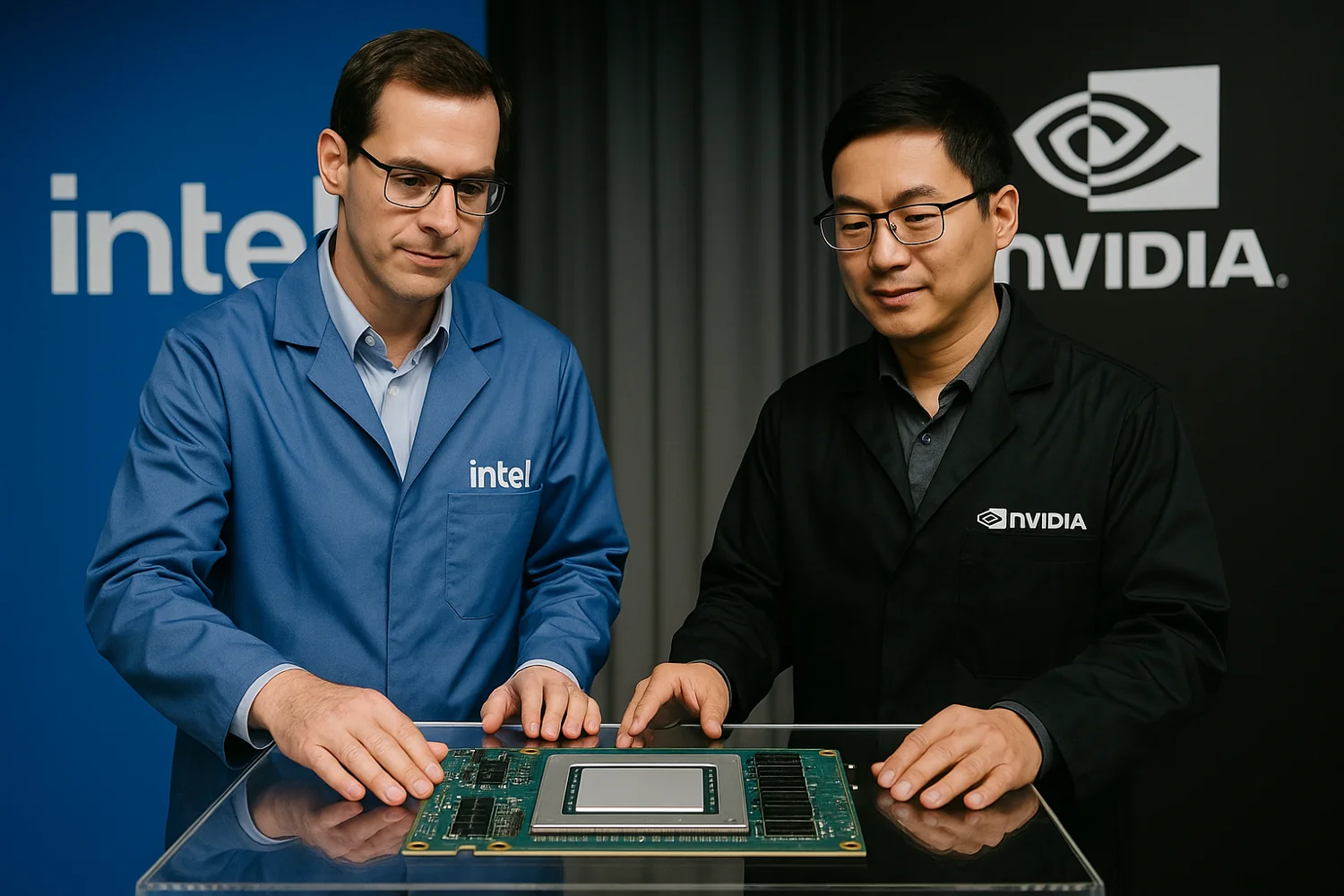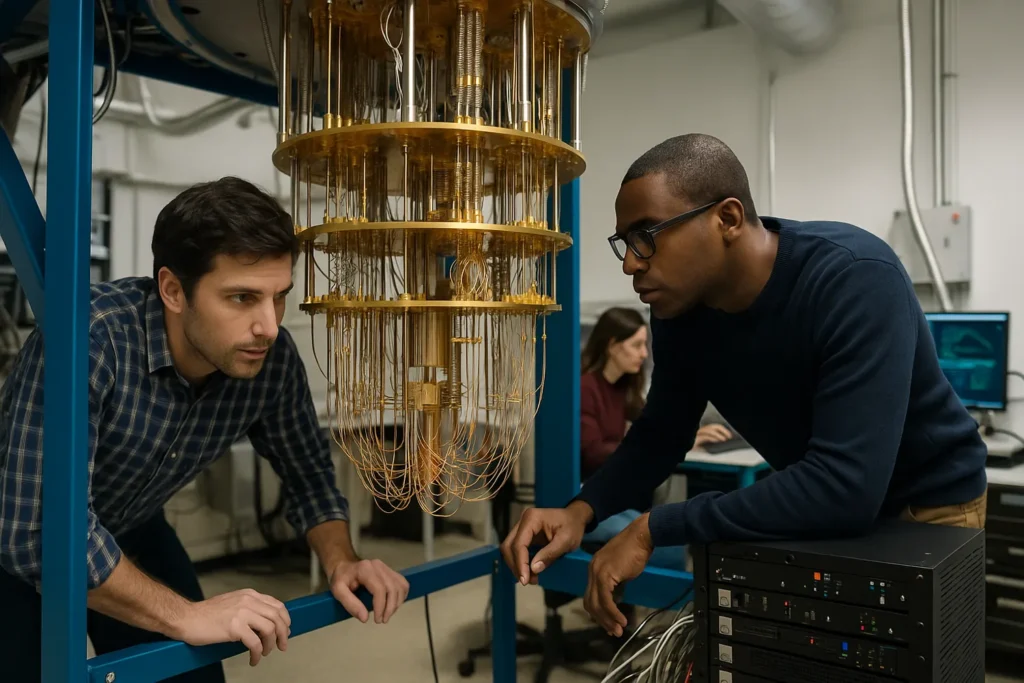The Intel NVIDIA partnership marks one of the boldest experiments in the history of computing. By embedding NVIDIA’s RTX graphics into Intel’s next-generation CPUs, the two titans are erasing the very boundary between processors and graphics units. The move promises to deliver gaming and AI performance once thought impossible without a separate GPU — but it also signals a deeper transformation in the balance of power across the tech industry.
Context: The mainstream narrative of performance and efficiency
Intel’s announcement shocked analysts who long saw it as a rival to NVIDIA in the GPU market. For years, the two companies operated in distinct domains — CPUs for Intel, GPUs for NVIDIA. But with demand for AI, 3D rendering, and machine learning growing faster than Moore’s Law can keep up, the traditional model has cracked.
In mainstream coverage, this deal is framed as a win for convenience: laptops and desktops could soon ship with CPU-GPU hybrids capable of high-end gaming, deep learning, and ray tracing without the bulk or heat of discrete cards. NVIDIA gains access to Intel’s vast chip manufacturing scale, while Intel taps into NVIDIA’s coveted AI and graphics dominance. The promise? A leap in energy efficiency and integration.
Oppositional Argument: Why this partnership is more than a performance play
Yet this collaboration isn’t just about performance. It’s about control — over the next era of AI hardware. Intel’s CPU market dominance and NVIDIA’s GPU monopoly create a dual-core empire that could reshape how computing power is distributed. By merging hardware ecosystems, they may sideline smaller competitors, from AMD to emerging AI chip startups.
The mainstream narrative celebrates “innovation,” but innovation can also mean centralization. When two giants merge their technological DNA, the industry doesn’t diversify — it consolidates. And in an AI-driven world, whoever controls the chips controls the algorithms, the training, and ultimately, the data itself.
Analytical Breakdown: Power, AI, and the hybrid revolution
The hybrid chip model isn’t new. Apple’s M-series blurred similar lines, integrating CPU, GPU, and neural engines into one silicon package. But Intel and NVIDIA together operate on a global industrial scale unmatched by Apple’s closed ecosystem.
This partnership could mark the start of a universal hybrid computing standard — where a chip isn’t just a processor, but a complete AI engine. Imagine every PC capable of on-device neural processing, eliminating the need for cloud inference. That’s revolutionary for privacy, latency, and autonomy — but also a threat to the current business models of cloud giants like Amazon and Microsoft.
Insiders suggest that this integration has been in quiet development since early 2023, when Intel engineers began testing modular GPU cores for their Meteor Lake series. NVIDIA, meanwhile, faced growing demand bottlenecks at TSMC and was exploring diversification of manufacturing partners. The collaboration is not merely technical — it’s strategic survival.
As semiconductor manufacturing faces global bottlenecks and geopolitical tension, Intel’s fabs offer NVIDIA a lifeline within U.S. borders. For Intel, the partnership is a shortcut to regain relevance in the AI race after losing ground to Apple and AMD.
Counterarguments
Skeptics argue the partnership could fail due to architectural incompatibilities or licensing hurdles. Integrating NVIDIA’s CUDA ecosystem with Intel’s CPU architecture is no small feat. Others warn that gamers and creators will still prefer discrete GPUs for thermal and upgrade flexibility.
But those concerns underestimate the strategic shift underway. The partnership isn’t aimed at enthusiasts — it’s aimed at platform dominance. If the integrated chips perform well enough for most users, the need for dedicated graphics will decline, collapsing an entire segment of the hardware market.
Human Perspective: What this means for users and industries
For consumers, the short-term benefits are clear: thinner laptops, lower energy consumption, and workstation-grade performance without the cost. But for professionals, it’s a double-edged sword. A hybrid Intel-NVIDIA chip could make AI computing accessible to millions — yet tether those same users to a closed ecosystem where every line of code and frame of render flows through two corporate gateways.
For game developers and 3D artists, this integration promises to level the playing field, democratizing real-time ray tracing and AI-assisted creation. For enterprises, it could accelerate AI adoption at the edge, from autonomous drones to industrial robotics.
But there’s a darker undertone. As chips become more “intelligent,” so too do the companies that design them. With built-in AI modules, the data processing and optimization layers can be remotely tuned — or monitored. The question is no longer just “what can this chip do?” but “who controls what it learns?”
Conclusion: A new technological axis of power
The Intel NVIDIA partnership could become the cornerstone of a new hybrid computing era — or the start of an oligopoly controlling the world’s digital infrastructure. It’s both an engineering marvel and a geopolitical statement.
For the first time, the future of AI, gaming, and personal computing may depend not on competition, but on cooperation between two historic rivals. Whether this leads to innovation or monopolization will define the next decade of technology.
The PC is no longer just personal — it’s becoming political.
External Links
- Reuters: Intel and NVIDIA announce graphics integration plan
- The Verge: Why hybrid CPU-GPU chips are the next frontier
81 views






